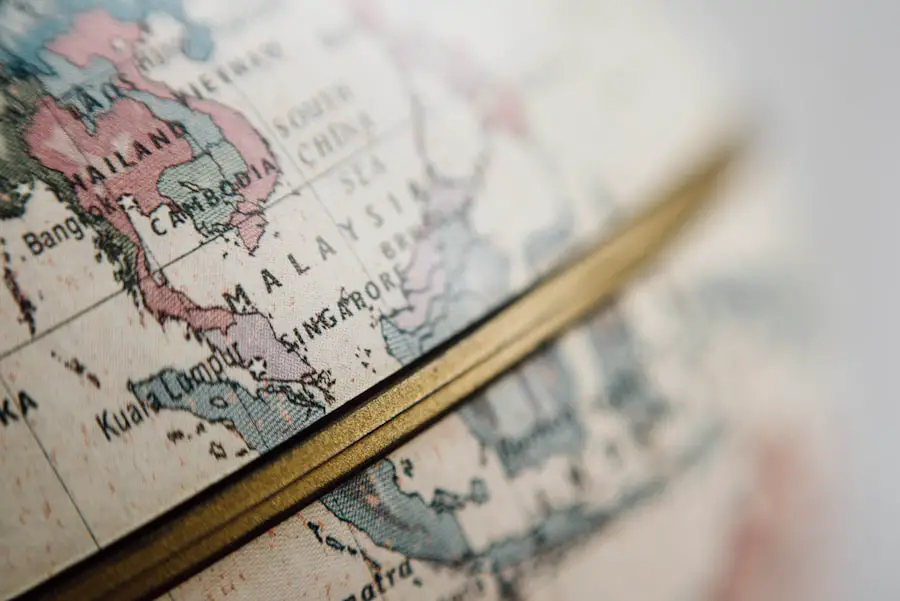The Caribbean, a vibrant tapestry of islands and cultures, is renowned for its stunning landscapes, rich history, and diverse ecosystems. Stretching from the Bahamas in the north to Trinidad and Tobago in the south, this region encompasses over 7,000 islands, islets, reefs, and cays. Each island boasts its own unique charm, from the lush rainforests of Dominica to the pristine beaches of the Bahamas.
The Caribbean is not just a paradise for beach lovers; it is also a melting pot of cultures influenced by African, European, and indigenous traditions. This cultural richness is reflected in the region’s music, cuisine, and festivals, making it a captivating destination for travelers seeking both relaxation and adventure. Tourism plays a pivotal role in the Caribbean economy, with millions of visitors flocking to its shores each year.
The allure of crystal-clear waters, vibrant coral reefs, and warm hospitality draws people from all corners of the globe. However, understanding the best times to visit can significantly enhance the travel experience. Factors such as weather patterns, local events, and seasonal pricing can influence not only the enjoyment of a trip but also its affordability.
This article delves into the various seasons in the Caribbean, providing insights into when to visit for optimal experiences.
Key Takeaways
- The Caribbean is a popular tourist destination known for its beautiful beaches, vibrant culture, and diverse landscapes.
- Peak season in the Caribbean is from December to April, offering perfect weather for beach activities and water sports.
- Shoulder season, from May to June, is the best time for budget travelers to visit the Caribbean, with lower accommodation and activity prices.
- Visiting during the off-season, from July to November, offers lower prices and fewer crowds, but comes with the risk of hurricanes and tropical storms.
- Special events and festivals in the Caribbean, such as Carnival in Trinidad and Tobago, can add an extra layer of excitement to your trip and are worth planning around.
Peak Season: When to Visit for Perfect Weather
The peak season in the Caribbean typically spans from mid-December to mid-April. During these months, travelers can expect idyllic weather characterized by warm temperatures, low humidity, and minimal rainfall. The average daytime temperature hovers around 80°F (27°C), making it perfect for sunbathing on the beach or engaging in water sports.
This period coincides with winter in North America and Europe, prompting many to escape the cold and seek solace in the Caribbean sun. Popular destinations like Jamaica, Barbados, and St. Lucia see a significant influx of tourists during this time, leading to bustling resorts and lively local events.
However, with the influx of visitors comes higher prices for accommodations and activities. Hotels often raise their rates during peak season, and popular attractions may require advance bookings due to increased demand. Travelers looking to experience the Caribbean during this time should plan ahead to secure the best deals and avoid disappointment.
Despite the higher costs, many find that the vibrant atmosphere and perfect weather make it worth the investment. The peak season also offers a plethora of activities, from sailing regattas to music festivals, ensuring that visitors have plenty of options to fill their itineraries.
Shoulder Season: The Best Time for Budget Travelers

The shoulder season in the Caribbean occurs just before and after the peak season, typically from late April to early June and again from late November to mid-December. This transitional period offers a sweet spot for budget-conscious travelers who wish to enjoy favorable weather without the crowds and inflated prices associated with peak season. During these months, temperatures remain warm, averaging around 78°F (26°C), while rainfall begins to increase slightly compared to peak months.
However, many travelers find that occasional showers do little to detract from their overall experience. Visiting during the shoulder season allows travelers to take advantage of lower rates on accommodations and activities. Many hotels offer enticing discounts or special packages to attract guests during this quieter time.
Additionally, popular attractions are less crowded, allowing for a more intimate experience with local culture and natural beauty. For instance, exploring the ancient ruins of Tulum in Mexico or hiking through the lush rainforests of Puerto Rico can be done at a leisurely pace without the throngs of tourists that characterize peak season. This period also provides opportunities for unique experiences such as local culinary festivals or art exhibitions that may not be as accessible during busier times.
Off-Season: Pros and Cons of Visiting during the Low Season
| Pros | Cons |
|---|---|
| Lower prices for accommodations and flights | Unpredictable weather |
| Less crowded tourist attractions | Some attractions may be closed |
| Opportunity to experience local culture | Reduced availability of tours and activities |
| More flexibility in travel plans | Potential for limited restaurant and shop hours |
The off-season in the Caribbean generally runs from June to November, coinciding with the Atlantic hurricane season. While this period can present challenges due to unpredictable weather patterns and potential storms, it also offers distinct advantages for those willing to embrace its uncertainties. Travelers who venture to the Caribbean during off-peak months can enjoy significantly reduced prices on flights and accommodations.
Many resorts offer enticing deals to attract visitors during this quieter time, making it an appealing option for budget travelers. However, it is essential to weigh these benefits against potential drawbacks. The risk of hurricanes is a genuine concern during this period, particularly from August to October when storms are most likely to form.
Travelers should stay informed about weather forecasts and consider purchasing travel insurance that covers cancellations due to severe weather conditions. Additionally, some attractions may have limited hours or be closed altogether during off-peak months as businesses adjust to lower visitor numbers. Despite these challenges, many travelers find that the tranquility of uncrowded beaches and the opportunity for authentic interactions with locals make visiting during the off-season worthwhile.
Special Events and Festivals: Planning Your Trip Around Local Celebrations
The Caribbean is a region rich in cultural heritage, and its calendar is filled with vibrant festivals and events that showcase local traditions and customs. Planning a trip around these celebrations can enhance the travel experience significantly. For instance, Carnival is one of the most famous events in the Caribbean, celebrated with exuberance in countries like Trinidad and Tobago and Barbados.
These festivals typically feature colorful parades, lively music, dancing, and delicious food that reflect the unique cultural identity of each island. In addition to Carnival, other notable events include Reggae Sumfest in Jamaica, which attracts music lovers from around the world with its lineup of top reggae artists. The annual Junkanoo festival in The Bahamas is another highlight, where locals don elaborate costumes made from colorful materials and parade through the streets in a celebration of Bahamian culture.
By aligning travel plans with these events, visitors can immerse themselves in local traditions while enjoying an unforgettable experience filled with music, dance, and culinary delights.
Weather Considerations: Understanding the Caribbean Climate

Understanding the climate of the Caribbean is crucial for planning a successful trip. The region generally enjoys a tropical climate characterized by warm temperatures year-round; however, variations exist between different islands due to geographical factors such as elevation and proximity to trade winds. The dry season typically runs from December to April when rainfall is minimal and humidity levels are lower.
Conversely, the wet season spans from May to November when showers are more frequent but often occur in short bursts rather than prolonged downpours. Travelers should also be aware of microclimates within specific islands that can affect weather conditions significantly. For example, while coastal areas may bask in sunshine, mountainous regions can experience cooler temperatures and increased rainfall.
Understanding these nuances allows travelers to pack appropriately and plan activities that align with local weather patterns. Additionally, being mindful of hurricane season is essential; while storms are not guaranteed every year, having contingency plans in place can help mitigate potential disruptions.
Tips for Booking Accommodations and Activities during High Season
When planning a trip to the Caribbean during high season, strategic booking becomes paramount to ensure a smooth experience. Early reservations are highly recommended as accommodations tend to fill up quickly during peak months. Utilizing online travel platforms can help travelers compare prices and find deals on hotels or vacation rentals that suit their preferences.
Additionally, signing up for alerts from airlines or travel websites can provide valuable information on flash sales or last-minute deals. Another important consideration is flexibility with travel dates; adjusting arrival or departure days by even a few days can lead to significant savings on flights and accommodations. For those interested in specific activities such as snorkeling excursions or guided tours, booking in advance is advisable as popular options may sell out quickly during peak times.
Engaging with local tour operators directly can sometimes yield better rates or exclusive experiences that larger companies may not offer.
Finding the Best Time to Experience the Caribbean
The Caribbean offers an array of experiences throughout the year, each season presenting its own unique advantages and challenges. Whether one seeks the vibrant atmosphere of peak season or the tranquility of off-peak months, understanding these dynamics allows travelers to tailor their trips according to personal preferences and budget considerations. By planning around local events and being mindful of weather patterns, visitors can maximize their enjoyment while exploring this enchanting region.
Ultimately, finding the best time to experience the Caribbean involves balancing personal priorities with external factors such as climate and local culture. With careful planning and an open mind, travelers can create unforgettable memories amidst the stunning landscapes and rich traditions that define this remarkable part of the world.
When planning your trip to the Caribbean, it’s important to consider the best time to visit in order to make the most of your vacation. According to TakeTravelInfo, the best time to travel to the Caribbean is during the dry season, which typically runs from December to April. This is when you can expect sunny skies, warm temperatures, and lower chances of rain. Be sure to pack your best travel camera backpack to capture all the stunning landscapes and vibrant cultures of the Caribbean islands.
FAQs
What is the best time to travel to the Caribbean?
The best time to travel to the Caribbean is during the dry season, which typically runs from December to April. This period offers the most favorable weather conditions with lower chances of rain and hurricanes.
What is the weather like in the Caribbean during the best time to travel?
During the dry season, the weather in the Caribbean is generally warm and sunny with temperatures ranging from 75°F to 85°F (24°C to 29°C). The humidity is lower, and there is minimal rainfall.
Are there any specific months to avoid when traveling to the Caribbean?
The Caribbean is prone to hurricanes, with the peak season running from June to November. Travelers are advised to avoid visiting during these months to minimize the risk of encountering severe weather conditions.
What are the benefits of traveling to the Caribbean during the best time?
Traveling to the Caribbean during the dry season allows for enjoyable outdoor activities such as swimming, snorkeling, and sunbathing. The pleasant weather also makes it ideal for exploring the islands and participating in various water sports.
Are there any cultural or local events to consider when planning a trip to the Caribbean?
The Caribbean hosts various cultural events and festivals throughout the year. Travelers may want to consider visiting during specific months to experience events such as Carnival, music festivals, and local celebrations.
